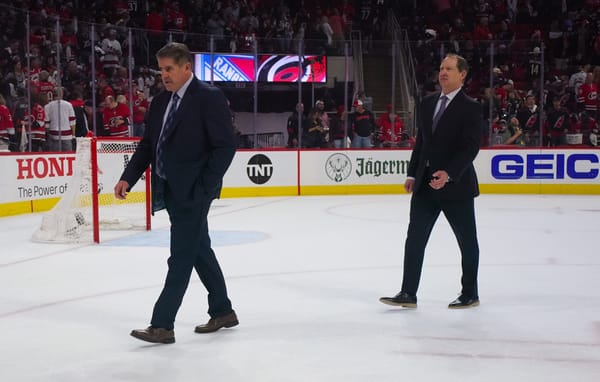New York Rangers analysis: On 'being hard to play against,' and puck possession
The Rangers were a pretty difficult team to play against last night by most metrics.
There's an ambiguous hockey term that floats around these parts known as "hard to play against." Its ingredients include JAM, grit, size (usually), and a host of other terms that are somewhat ambiguous themselves. There have been calls for the Rangers to "get bigger" and add players that lack skill, but add toughness.
Let's officially put this ridiculous notion to bed.
Conceptually, there are many different ways to be "hard to play against" that are actually grounded in logic. Most commonly, people love to refer to the Bruins because of the way the roster Peter Chiarelli has constructed mixes size and skill. It's unmatched by any team in the league. It's truly a marvel to watch.
But let's throw out another team that's hard to play against: the Los Angeles Kings. Since Darryl Sutter's squad won the Stanley Cup in 2012, it's been a perennial contender, and a top team league-wide.
What the Bruins, Kings, and the Rangers (yes, these Rangers) all have in common isn't there ability to check players through the boards, but possess the puck.
All season, the Rangers have been a top team in the league when it comes to Corsi. The same can be said about Fenwick. You'll notice the teams in close company with the Rangers: those Kings, those Bruins, the Sharks, the Blackhawks; teams that are considered some of the league's best.
So how exactly did that happen? Throwing out last year's smaller sample size (where the Rangers were still better in puck possession) this year's team under Alain Vigneault is a world's better than 2011-2012. Much of that is systems-based, something we've talked about frequently as a big adjustment under Vigneault.
And if you want to know just how much the Rangers dominated Thursday night's Game 1, look no further than the numbers.
The Flyers tried to play a more physical game to throw the Rangers off theirs—it didn't quite work. What made life so difficult for the Flyers, and what the made the Rangers so "hard to play against," was that they frequently had the puck.
That was precipitated by guys who are never going to drop the gloves, or are heavyweights by any measure. Guys like Carl Hagelin, Jesper Fast, Mats Zuccarello, and Derick Brassard. Players who upped the tempo, while maintaining possession, and played a different form of defense by simply keeping the puck off Flyers' sticks. How do you protect a lead in the third period? How about giving up one shot on goal. And it's awfully hard to shoot the puck if it's never on your stick.
This notion of "being hard to play against" is such a Stone Age, incomplete philosophy that lacks any sort of logic. What we can say that's more definable is if you completely dominate the puck, it's going to be awfully hard for your opponent to get much done.
It extends up-and-down the Rangers roster. Why fill your fourth line with players who add no skill when you can trot out a unit that will possess the puck in the offensive zone, and really positively contribute to the fold?
The NYR 4th line had only 33% O-zone starts, were matched against the Giroux line, and still had a combined Corsi around 65%. Incredible.
— Adam Herman (@Herman_NYRBlog) April 18, 2014 These are reasons to be very excited about the Rangers prospects at a deep playoff run. Not because players are sticking up for each other, and not because the team isn't getting pushed around. It's because if you can have the puck the majority of time—something that's quantifiable (unlike JAM)—you're putting yourself in a pretty good position to win.





